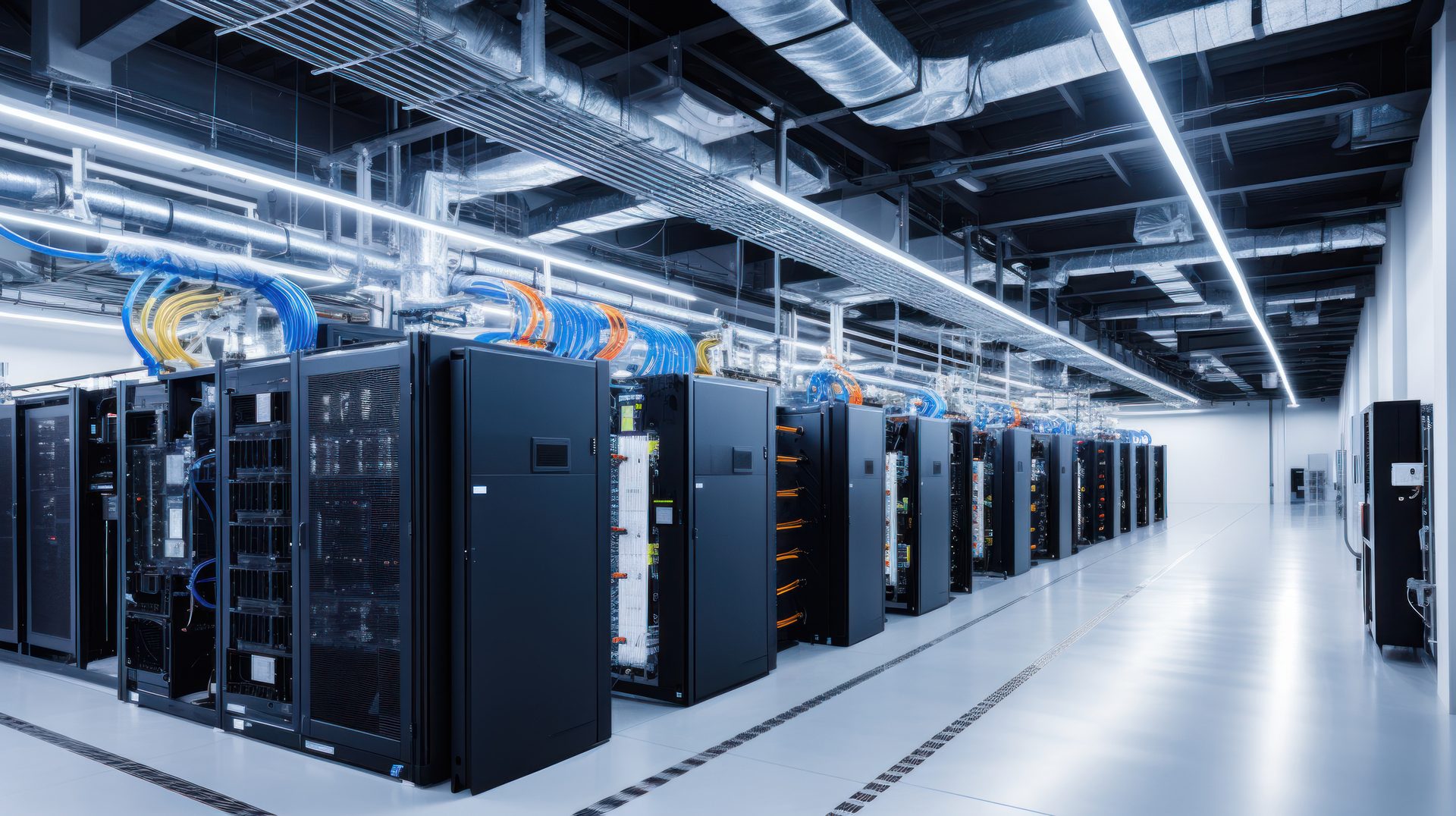Data Centre
Demand for data centre sites in Norway is increasing at a rapid pace. From being a small local market, mostly serving cloud operations for individuals and corporations in the main Norwegian markets, we now experience a rapid change in demand for powered land for data centres.
High Power Demand, Tight Supply
Data centres are a critical part of modern IT infrastructure and are used by individuals and organizations of all sizes, ranging from small businesses to large enterprises, cloud service providers, and government agencies. The servers at the core of these data centres are highly power-intensive, and increasingly so. Combined with the rapidly increasing power demand from other industries, the queue for being allocated power capacity in Norway is becoming very long.
Demand for powered land is high, and increasing the supply side is both time- and capital-intensive. Currently, Norway produces about 10 percent more electricity than current consumption. Getting the power to the right place is the short-term challenge. The Norwegian power grid faces challenges and bottlenecks due to its geographical constraints, hydropower dominance, interconnection with neighbouring countries, seasonal variations, and infrastructure development challenges. The uneven distribution of power generation and consumption necessitates ongoing efforts to invest in infrastructure, manage congestion, and balance the grid for efficient distribution. Statnett, responsible for the backbone of the grid, aims to invest NOK 100-150 billion in the onshore power grid over the coming 10 years.
10 Data Centre


80
90
350
1500
1850
170
Overview of existing data centers in Norway and future development plans (megawatt IT capacity)
Megawatt (MW) Data centre capacity
Today
TikTok part 1
Development next five years
Communicated projects long term
Total
2250
2000
1750
1500
1250
1000
750
500
250
0
Active
Development
AI and machine learning boost demand in Norway
Leasing demand for data centre capacity in the main European markets has increased two to three times over the last eight years, according to our international partner JLL. According to them, fuelling the already stoked-up sector is the emergence of one of the largest technological disruptors we have seen: Generative AI. The high compute power requirements of AI models are driving a fundamental change in the very design of data centres. To support AI’s high-density and performance requirements, GPU chips are needed rather than the traditional CPU chips used in current data centre designs. These chips require liquid cooling rather than air cooling to keep temperatures below the thermal limit.

NVE expects that Norwegian power production will increase primarily through offshore wind.
Bring the data centre to the power
Looking at AI demand with a macro lens, data centres used for training AI models are less reliant on latency, so proximity to the end user is not a key consideration. As a result, JLL expects to see a ‘bring the data centre to the power rather than bring power to the data centre’ approach. These data centres can be strategically located where access to renewable energy, land, and water scarcity are not issues. This underpins a strong case for Norway, with its high share of hydropower, cool climate, and stable geopolitical situation. Akershus Eiendom have experienced an influx of inbound land searches for data centre operations over the last two years, expecting this to continue going forward.

Statnett expects that the current 10 percent power surplus will be fully utilized by 2030.
Demand growth: increase in applications for grid capacity in Norway from data center operators.